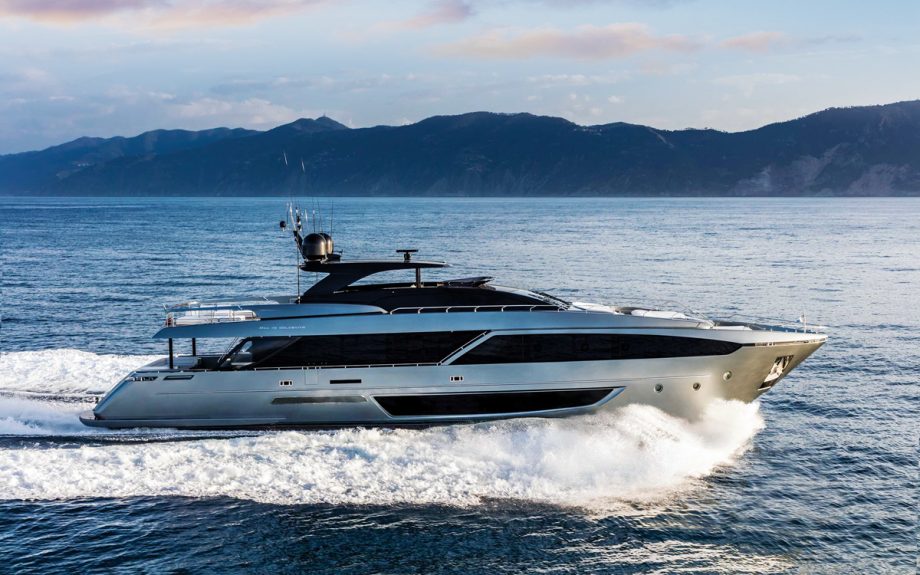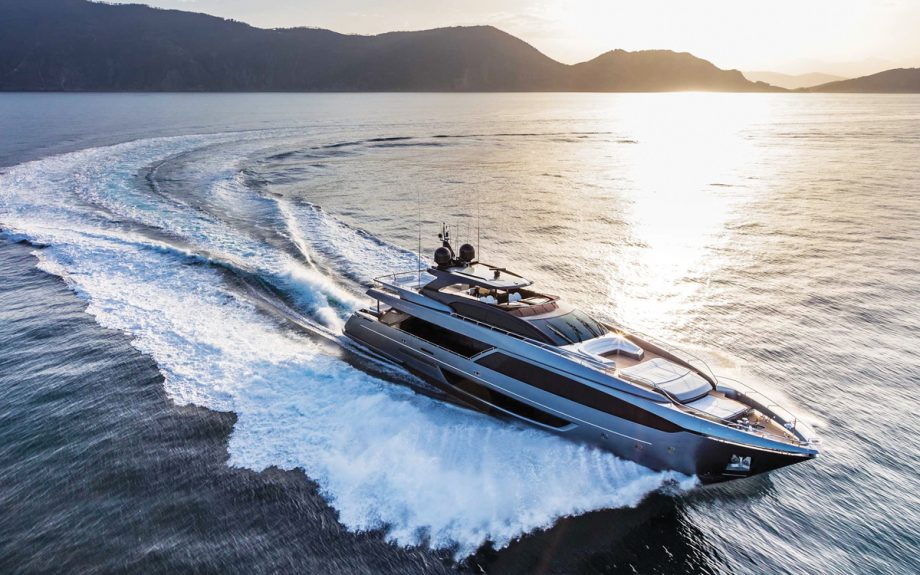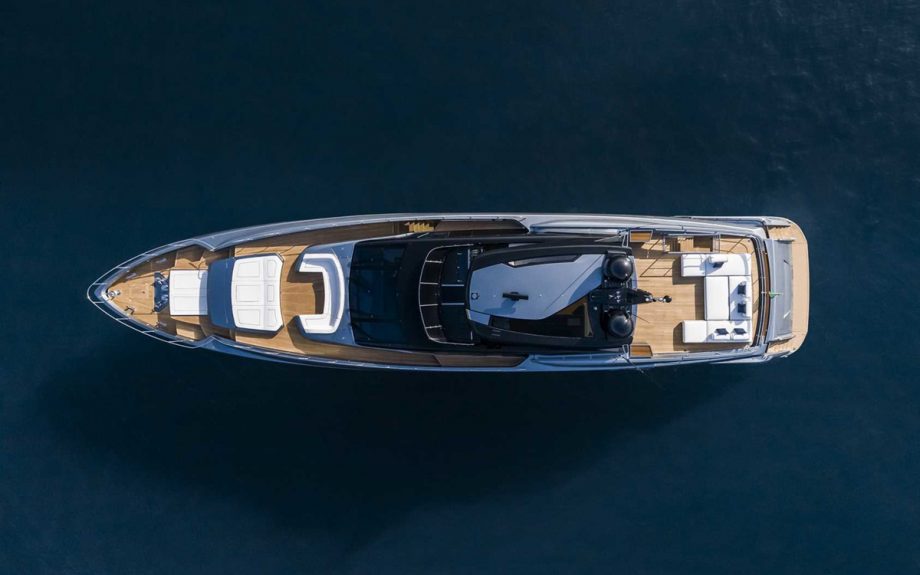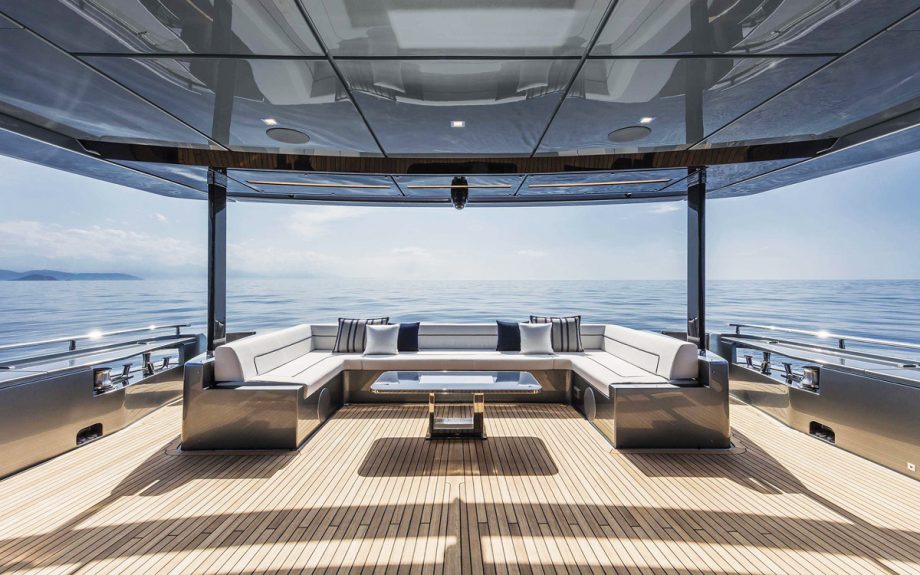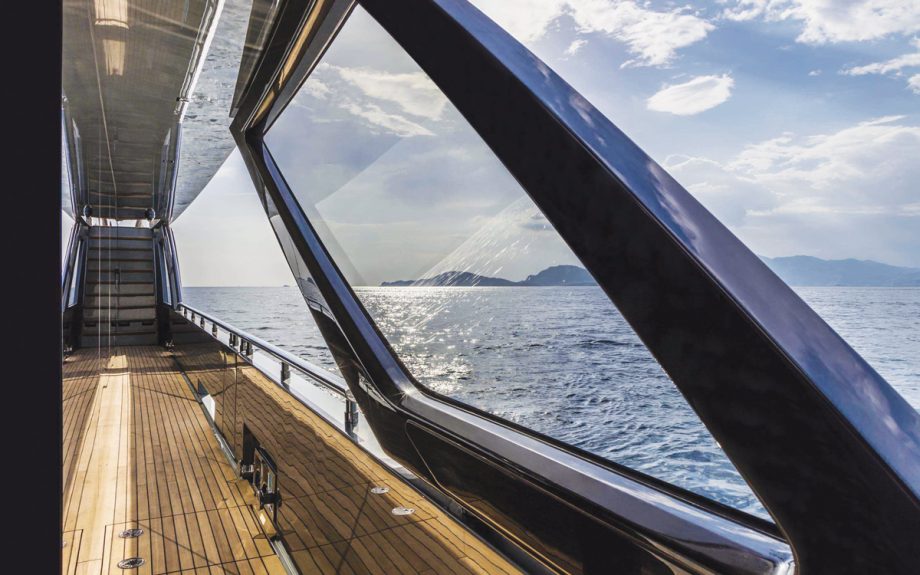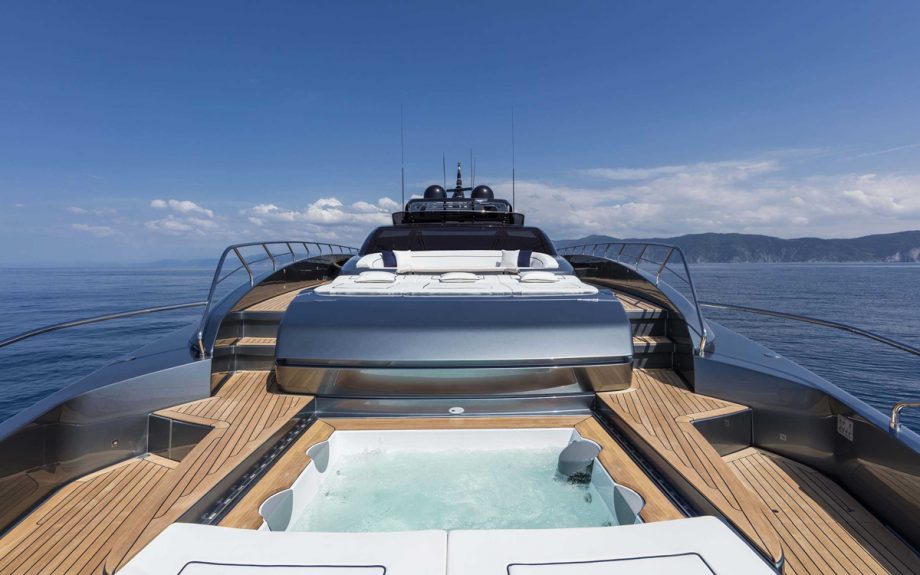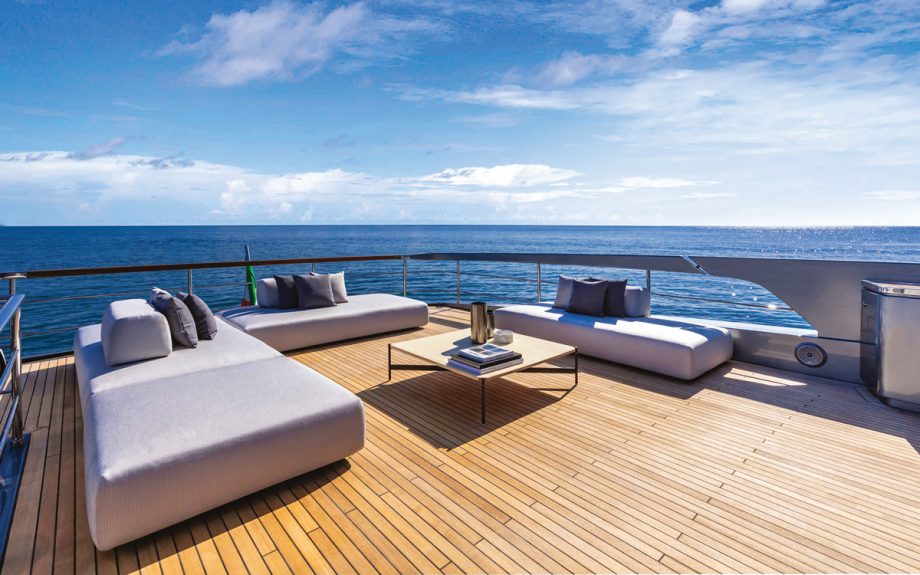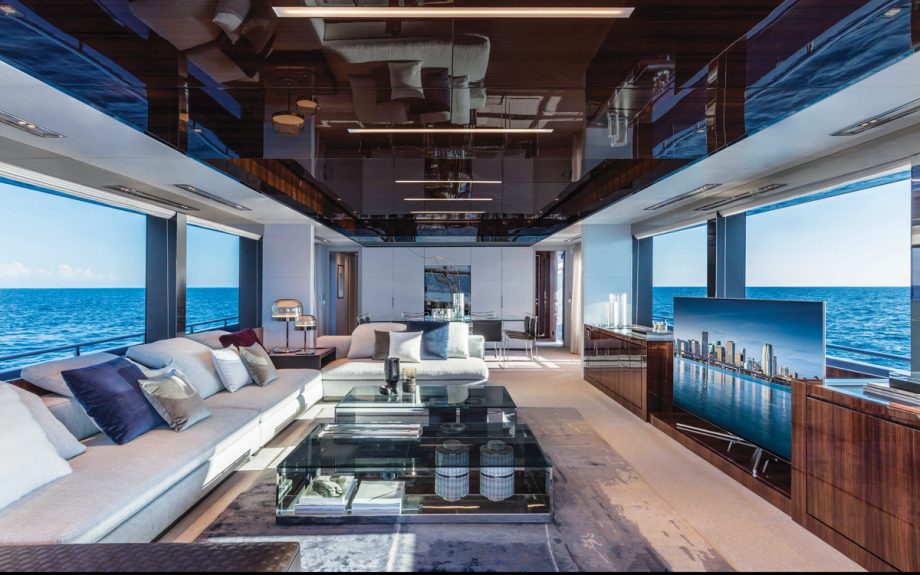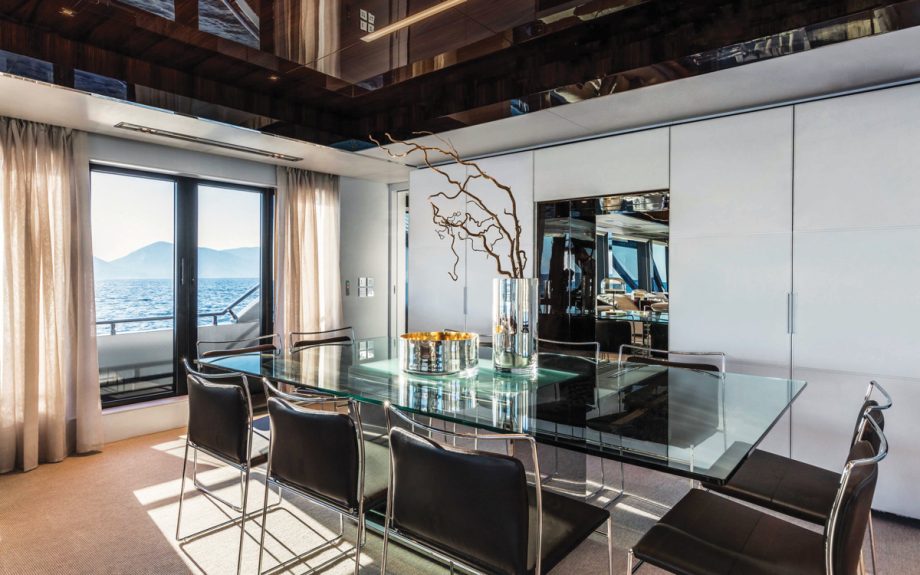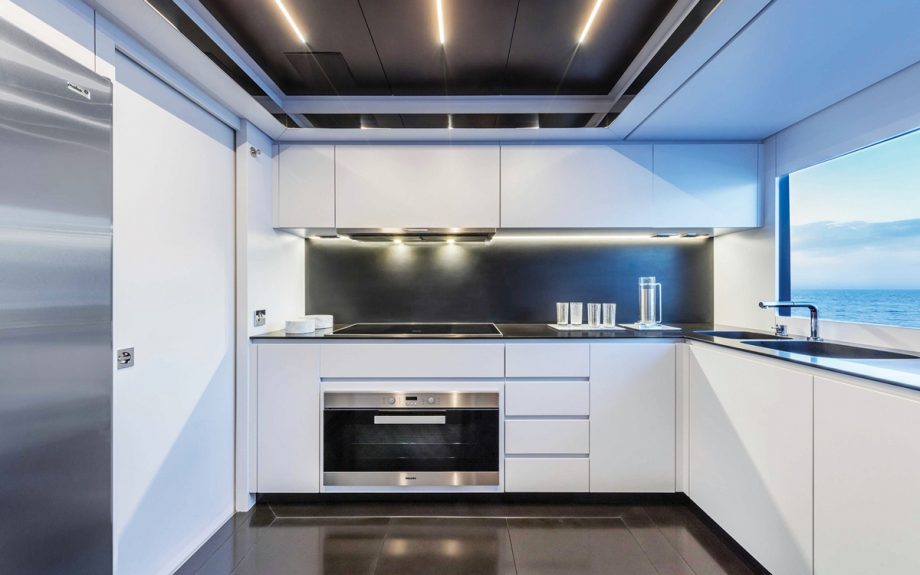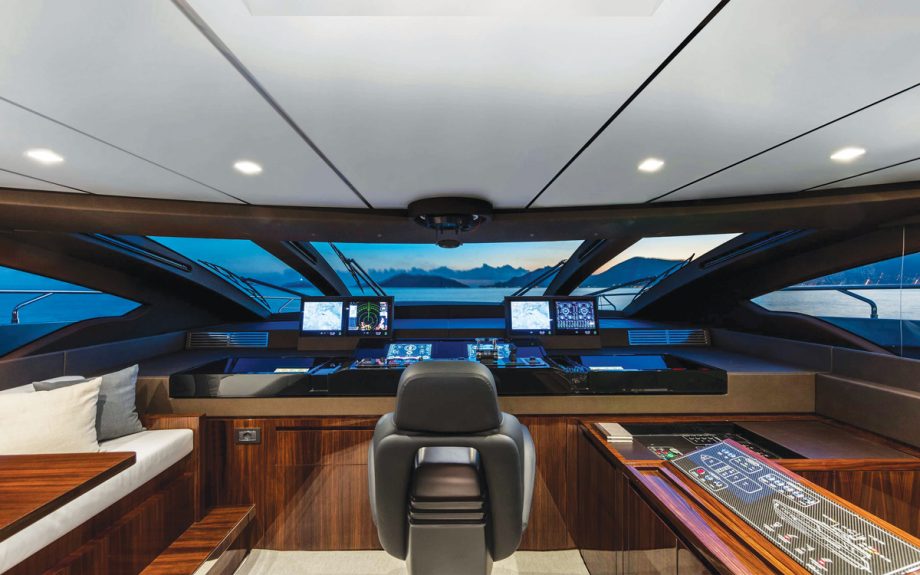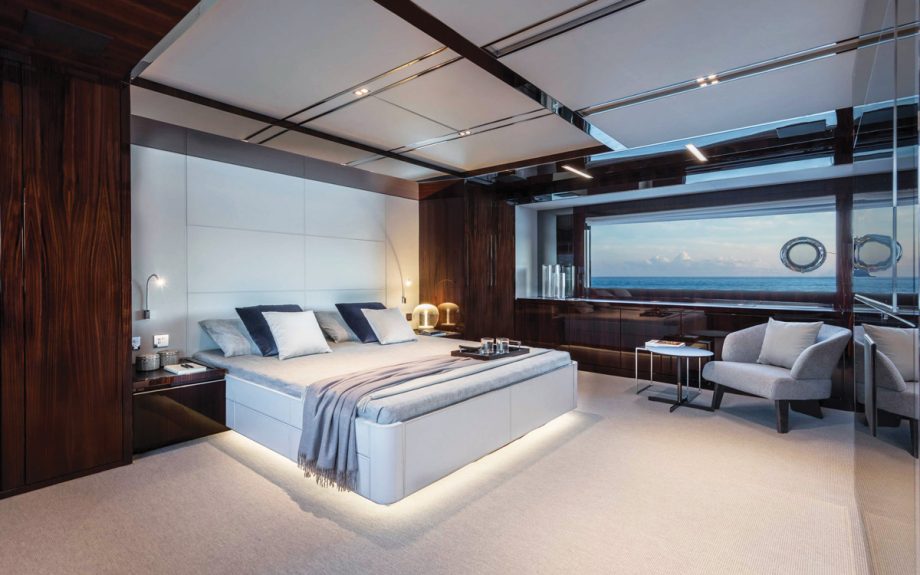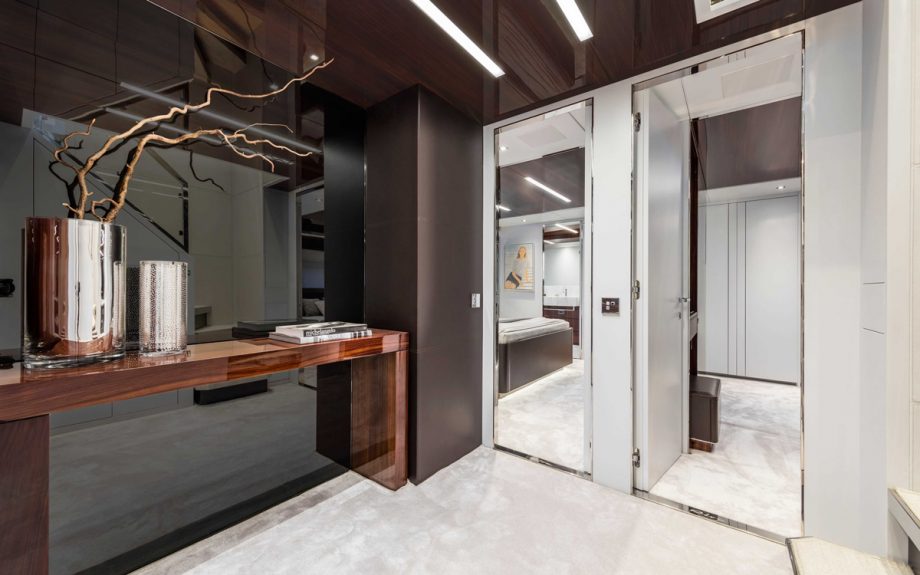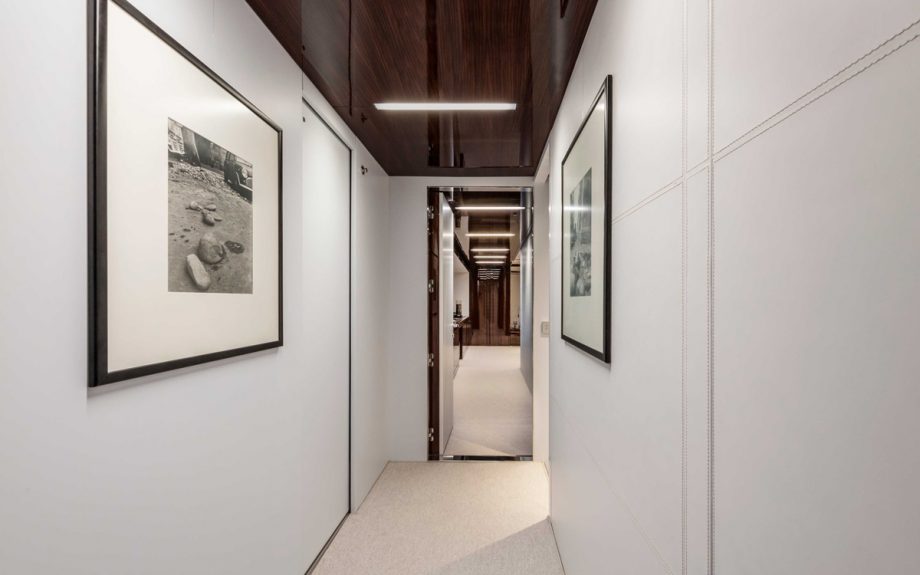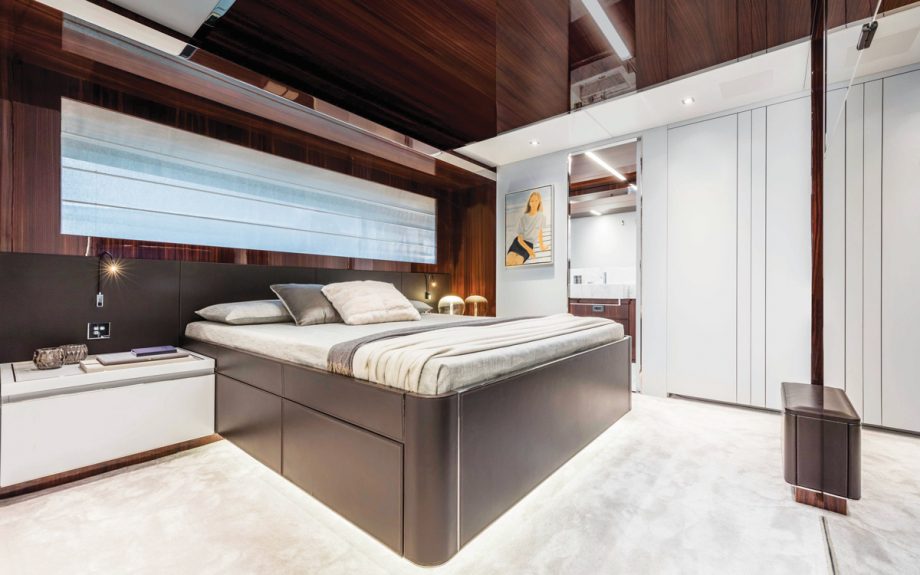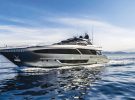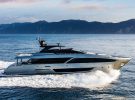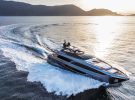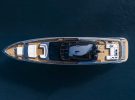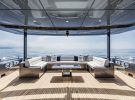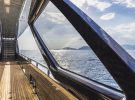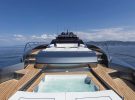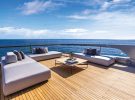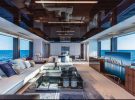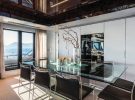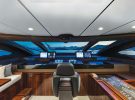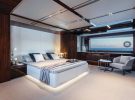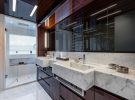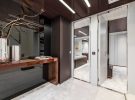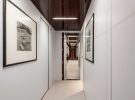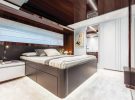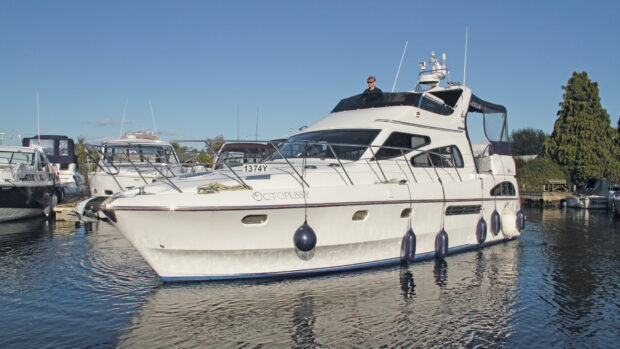The Riva 110 Dolcevita is a masterclass in understated excellence, as expected from such a powerhouse brand
The global market for motor yachts of this size is febrile, cut-throat and small. A successful production run of a new model might amount to a couple of dozen units over its three- or four-year life, often much less, while development costs are measured in millions. Certain truths are held to be self-evident. Ignore them at your peril. It’s a brave shipyard that takes a risk.
The designers of the new Riva 110 Dolcevita can perhaps be forgiven if it bears a passing resemblance to a lot of other shipyards’ attempts to appeal to the same small set of customers. You can tell with a glance what you’re getting: a full-beam master suite on the main deck, four spacious guest ensuites down at the waterline in that beamy hull and a spectacular saloon with huge windows to open up picture-perfect views of the seascape.
What this analysis doesn’t acknowledge, though, is the power of the Riva brand. It’s double-edged. Its effects are felt both inside the shipyard and out. Some customers, still, are happy to suppress their powers of rational discernment and buy a boat simply because it has a Riva badge on the side.

The hull barrels across the wave tops with nonchalance verging on disinterest
Back in the drought of the 1980s, such was the management’s reliance on this dwindling band of devotees that its complacency nearly sank the shipyard. Luckily it was saved, first by Stephen Julius and then by Norberto Ferretti, and to such effect that that happy band, apparently, is no longer dwindling.
Effortless chic
Inside the organisation, the Riva name creates pressures that do not afflict other shipyards. Of course every successful manufacturer has its own production standards, but at Riva the designers and craftspeople are trying to satisfy standards which have been created for them by their company’s own mythology.
While it might not be realistically feasible, these days, to build their boats to a higher technical standard than other elite production shipyards, they nevertheless have to look like they do. Such are the expectations of romantics smitten by pictures of Brigitte Bardot in her plywood Riva speedboat.

The cockpit is enormous even for a boat as big as this one is
To take a stroll through a new Riva motor yacht is a visual and tactile experience of the kind you get in custom superyacht yards. The emphasis on surfaces and finish quality, whether it’s the steel and marble in the bathrooms or the leather and lacquer in the living areas, underlines the importance of creating the correct impression. It’s expensive, and it has to look expensive – but without trying too hard.
Understated excellence
The design language in the 110 Dolcevita is classic modernist, shown to best effect not just in the stunning saloon but also in the pared-back white panelling of the lower-deck corridor and in the absence of such distracting detailing as handles or hinges.
The cabins’ wardrobe doors would try the patience of the most dedicated design buff, staring back blankly and offering no clue whatsoever to the secret of how to get them open. (Push the vertical panel, insert fingers in rebate and pull.)

With a hull nearly 24ft (7.27m) wide and no shortage of height in its profile, the 110 Dolcevita can boast some well-proportioned accommodation spaces, with headroom of 6ft 7in (2.01m) or more pretty much everywhere, and full-size berths in all the cabins.
The double in the forward guest ensuite on the starboard side can split into two berths – each 31in (79cm) wide – and with its drop-down Pullman deployed this would make a popular kids’ cabin.
Noteworthy options in the 110 Dolcevita’s interior include a huge, full-beam VIP suite down below, formed by merging the two midships ensuites. You can also select a pair of folding balconies on the main deck, at each end of the table, which would make an unbeatable spot for dinner on a warm, still evening.

Steel structure allows for the slim mullions in the light-filled saloon
Even leaving aside these temptations, though, along with the assured interior design and exemplary finish, it would be hard at this stage to pinpoint exactly what the 110 Dolcevita offers that others don’t. Understated excellence is everywhere but those unique little touches that one expects of a Riva seem harder to come by.
Even the flooding tender garage – a superb system that sees the beach club platform continue its descent into the briny until the sea comes in to float the Williams 505 – is a Ferretti Engineering innovation, which has been seen on other yachts from the Group.
The internal steel frame of the superstructure, on the other hand, is something novel. Completely hidden, it all makes sense once you realise that those slender mullions and supports between the saloon windows, which make a spectacular success of such an expansive glazed area, simply wouldn’t be strong enough to support the flybridge if they were made of glassfibre.

Space is the ultimate luxury on board the aptly named Dolcevita
Up on the flybridge itself, meanwhile, the playfully mismatched glass panels in the hardtop might not be risky enough to be described as brave, but they are certainly unique, and as an example of the sort of flair that Riva buyers seek, they are both practical and pretty.
You won’t find anything like them in any other production boat. Their daring asymmetry provides a hint as to the core feature of the 110 Dolcevita – the design touch that provides the yacht with its personality, and helps make it a Riva.
You need to stand on the bow to appreciate it. Look aft, down the starboard side, and the walkway descends via the conventional external companionway to the main deck, from which you can enter the saloon via the side door, or continue aft to the cockpit.

Starboard side deck rises up over the main deck master suite
Look down the port side, however, and the walkway takes you up a gentle slope to the flybridge, with access to the helm station, the upstairs dining table and aft to the sunbathing area.
Performance
It’s not just those hardtop panels that are asymmetrical. It’s the entire yacht, done in such a measured, understated way that you hardly notice. It’s very Riva.
The other thing that’s very Riva is the 110 Dolcevita’s performance. A Riva has to go well – speed is part of the brand promise – and a pair of 2000-series MTU V16s in a splendidly engineered machinery space provide a whopping 5,276hp.

A combined 5,276hp powers the Dolcevita along at speeds of up to 26 knots
Our test yacht, well loaded with around seven-and-a-half tonnes of fuel and water and the substantial tender in the garage, clocked a two-way best of 26.8 knots.
A heavy boat will always feel that way unless its power-to-weight ratio is unusually favourable, and that’s not an engineering possibility in motor yachts of this size. But the 110 Dolcevita had quite lively acceleration, running from tickover to 20 knots in 15 seconds, and to 26 knots in just 15 more.
In fact, it provided an involving drive, with precise if sedate handling, and a solidity in the cruise, which promises to translate into comfort on passage. It was quiet, and at a cruising lick of around 23 knots its safe range would be around 400 miles. Pretty impressive for such a big boat, but just what we expect from a Riva.
Price as reviewed:
£10,600,000.00 (approx. ex. VAT)
Details
LOA: 110ft 0in (33.53m)
LWL: 92ft 9in (28.28m)
Beam : 23ft 10in (7.27m)
Draft: 6ft 6in (1.99m)
Displacement (loaded) : 147 tonnes (324,080lbs)
Fuel capacity : 15,300 litres (3,365 gal)
Water capacity : 3,000 litres (660 gal)
Test engines : Twin 2,638hp MTU M96Ls
Top speed : 26.8 knots
Cruising speed : 21 knots
Fuel consumption : 669lph
Range: 384 miles
Noise: 58 dB(A)
Design : Officina Italiana Design / Ferretti Group




